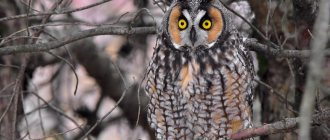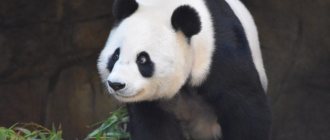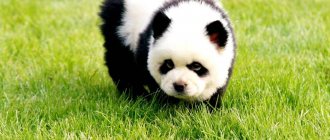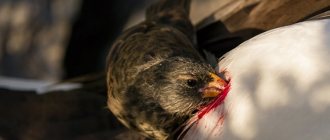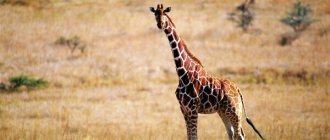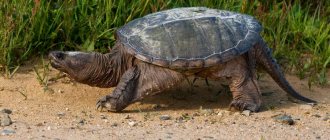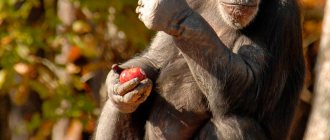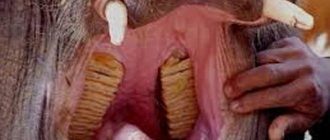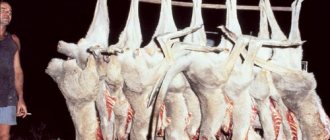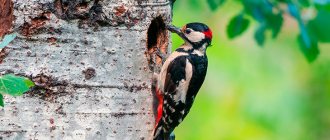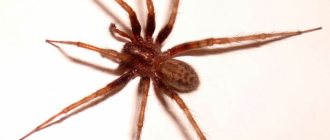What can a panda do?
Eat, sleep, crawl and climb a little, swim. Darmaidayxx and 52 other users found this answer helpful!
Interesting materials:
How quickly does cigarette addiction develop? How to quickly do the splits for beginners? How to quickly become a keeper in Avatar 2020? How to quickly boil eggs? How quickly do pepper seedlings sprout? How to quickly grow zucchini? How to quickly grow wheat in Minecraft? How to quickly whip sour cream? How to quickly steam a bath broom? How often can a cerucal be performed?
From 100 g to 160 kg: how pandas are born and grow
Giant pandas are one of the cutest animals on our planet, the most famous and at the same time the rarest. These animals have become the favorites of many for one simple reason: they are very charming, with soft dense fur and unusual colors. Associations with plush toys quickly appeared, and the image of a good-natured animal was further reinforced by the fact that pandas eat almost exclusively bamboo, although they are predators.
A panda cub, not yet a month old. Photo: panda.org.cn
Just recently, China announced that giant pandas are no longer on the verge of extinction, we wrote about this here . The paradox is that humans are partly to blame for the decline in the number of animals, because one of the reasons why pandas have become much smaller over the past half century is the reduction of bamboo forests. However, we realized in time what damage we were causing to the animal world, so now entire centers are working where they are trying to restore the animal population. And giant pandas are no exception; there is a center for the conservation of the species in the city of Chengdu in Sichuan province, which, along with Tibet, is actually the homeland of giant pandas.
The second reason why giant pandas have become fewer and fewer in recent decades is that these animals reproduce very poorly.
Newborn babies
The mating season for pandas begins at the end of spring: several males usually compete for the heart of one lady. Pregnancy in animals does not last long, about three to four months. Pregnancies are often multiple: giant pandas are born with twins in about half of the cases, but triplets are much less common.
A newborn cub in the Wenchuan Wulong National Nature Reserve. Photo: Wang Chengdong
The bear cub is incredibly tiny, weighing on average 100-130 grams, which is approximately 1/800 of an adult. When compared with other mammals, including humans, this is the largest difference in size between an adult and its newborn baby.
Newborn babies have pink skin, which is clearly visible through a thin layer of fur. They are blind and cannot walk at all. The only thing they know how to do is eat, often and a lot, because they need to become about eight hundred times larger. Therefore, the new mother feeds up to 14 times a day, and each feeding lasts about half an hour.
A one-week-old baby who has begun to develop dark spots. Photo: wikipedia.org
The saddest thing is that a mother feeds only one baby: it is believed that she is not able to feed two. Therefore, she chooses the strongest and cares only about him. The second baby dies. But if he was born not in the wild, but in a nature reserve or zoo, then they try to release all newborns there.
The triplets in the photo are about two weeks old. Photo: China Daily/Reuters
So, in 2014, for the fourth time in the entire history of observation, triplets were born to a panda in a Chinese reserve. All the babies successfully survived: but thanks to specialists, only one cub would have survived in the wild.
Monthly bear cub
About a week after birth, the newborn baby's fur begins to darken in characteristic places: around the eyes, shoulders and ears. By the month the drawing becomes bright and already familiar to everyone. At this age, the panda cub gains a fair amount of weight and becomes about two kilograms. The babies are still unable to move, but they are actively trying to crawl.
Month-old babies. Photo: @tina_travelphotos/Instagram.com
Three months
At the age of three months, it is already easy to recognize a panda in a bear cub, even in its clumsiness: the cubs are just beginning to stand on their feet and take their first steps. Usually at this age they can walk no more than a meter, staggering dangerously on their four legs.
Pandas at three months of age still lie down rather than walk. Photo: @tina_travelphotos/Instagram.com
4 months
The four-month-old panda begins to run, although still hesitantly and still clumsily, so the baby can easily fall. This is probably why kids’ favorite game is to roll on the ground or floor. They are still eating their mother's milk and have not tried any other food yet.
Pandas born in 2016 in the Chengdu nature reserve. Photo: China Daily
6 months
At six months, the baby usually tries bamboo for the first time, but at first it is only an additive to food, since the basis of the diet is still mother’s milk: this will continue for up to a year. From this time they begin to actively grow, and males usually gain weight much faster.
Six-month-old Xue Bao (left) and Qian Jin at the Shanghai Zoo. Photo: Ti Gong/Shine.cn
Two years and freedom
By the age of one year, babies switch to food familiar to adults - bamboo. They live with their mother for about another six months to a year, and then they begin to lead an independent life. By this time, the mother panda is just ready to become pregnant again: in the wild, pregnancy usually occurs once every two years. If the cub was born in a reserve, then at approximately this age it is sent into the wild.
Release of a two-year-old panda into the wild, 2022. Photo: giantpandaglobal.com
Do you know why pandas switched to bamboo? Read about it in our other article about these fascinating predators.
Sources:
- giantpandaglobal.com
- panda.org.cn
- www.nationalzoo.si.edu
Features of character and lifestyle
Photo: Spectacled bear animal
Spectacled bears prefer a solitary existence, acquiring a pair only during the mating season. Although sometimes in places of great abundance of various foods several bears can coexist in the same territory. However, usually predators each live in their own area, which they carefully mark. The spectacled bear is quite good-natured and will not attack or incite conflict over trifles. Even if someone stranger came to his territory, he would limit himself to only a growling warning to see off the uninvited guest.
These bears attack only in extreme cases, when there is no other choice. They usually avoid unwanted encounters (for example, with a person) by climbing tall trees. There, high in the crown (about 30 meters in height), bears build themselves something like a platform, where they rest and store their food supplies. Mother bears can be aggressive and are ready to do anything to protect their clumsy offspring.
If there is enough food in the bear's territory, then the spectacled predator does not move further than half a kilometer from its nest. During periods of hunger, bears can travel about six kilometers in a day in search of food. In communication between bear relatives, smells play a large role, and sounds fade into the background. Most often, only the mother bear communicates with the cubs using some sound signals.
So, the spectacled bear is a fairly peaceful animal, not aggressive and not prone to conflicts. The predator's disposition is quiet and calm; the bear avoids people, choosing remote and secluded areas for its life.
Species status
The owner of luxurious fur is always at risk. Local residents persecute the animals in order to use their fur to make accessories. And the traditions of Yunnan province consider the fur of the red animal to be a talisman of family life. It’s not for nothing that these cute animals were included in the Red Book as a threatened species. Despite the small number of enemies in the predatory nature, the number of individuals of small pandas is no more than 10 thousand.
Widespread deforestation threatens the development of the red panda population. In the Himalayas, their numbers have decreased by more than a third.
To save the species from potential extinction, a large number of zoos take in animals for keeping. And some representatives have been so domesticated that they can be found as pets.
Misidentification of gender
A similar case of misgendering had already occurred in 2005, when a cub thought to be female was actually male. Even experts can correctly name the gender of a panda baby only a month after birth. So, this is the case when there is no need to rush with public statements. But in Japan, every birth of a panda in captivity is a major event. People rejoice and wait for the gender of the baby to be announced.
The panda cub, born on November 21, was light pink at birth and weighed just 170 grams. This was soon followed by a statement from Adventure World deputy director Tatsuko Nakao that the cub's mother, Rauhin, had given birth to a "healthy baby boy." Determining the sex of pandas without genetic testing is a difficult task. Not surprisingly, the experts were wrong. True, admirers of these animals were still satisfied.
“Fisherman’s” sandals and 4 more pairs of shoes without heels, in which your feet will not get tired
Serebryakov returned to Russia. Shukshina believes that he should not have left
Apple does not leave the market in Russia, agreeing to install Russian software
